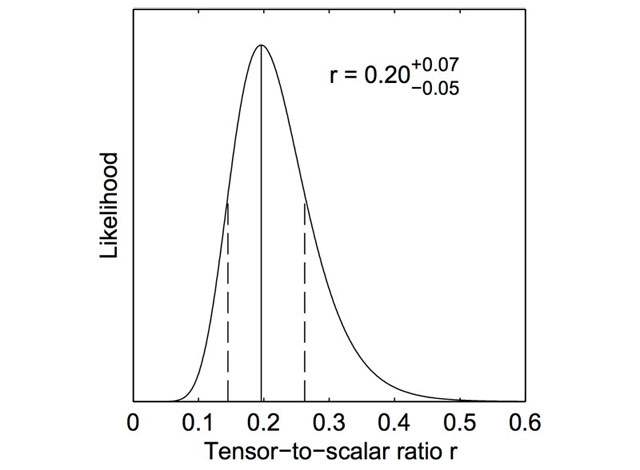Ruh-roh. Remember the news last month about the detection of gravitational waves would have allowed scientists to see all the way back to the Big Bang? Well, that result may be in jeopardy. The problem? Dust on the lens. Well, not on the lens exactly:
An imprint left on ancient cosmic light that was attributed to ripples in spacetime — and hailed by some as the discovery of the century — may have been caused by ashes from an exploding star.
In the most extreme scenario, the finding could suggest that what looked like a groundbreaking result was only a false alarm. Another possibility is that the stellar ashes could help bring the result in line with other cosmic observations. We should know which it is later this year, when researchers report new results from the European Space Agency’s Planck satellite.
You may also remember the video of physicist Andrei Linde being told about the result, which seemed to confirm a theory that had been his life’s work. I don’t think I want to see the video of Linde being told of this stellar ashes business. Although Linde is more than aware that this is how science works…you have to go where observation takes you. (via @daveg)
I love this video. Love love love. Chao-Lin Kuo surprises Andrei Linde and his wife with the news that gravitational waves were detected, proving Linde’s theory of an inflationary universe.
Love love love. (via @stevenstrogatz)
Update: Many people have asked what Kuo is saying to Linde on the doorstep. Let’s start with “5 sigma”. The statistical measure of standard deviation (represented by the Greek letter sigma) is an indication of how sure scientists are of their results. (It has a more technical meaning than that, but we’re not taking a statistics course here.) A “5 sigma” level of standard deviation indicates 99.99994% certainty of the result…or a 0.00006% chance of a statistical fluctuation. That’s a 1 in 3.5 million chance. This is the standard particle physicists use for declaring the discovery of a new particle.
The “point-2” is a bit more difficult to explain. Sean Carroll defines r as “the ratio of gravitational waves to density perturbations” as measured by the BICEP2 experiment, the telescope used to make these measurements. What BICEP2 found was an r value of 0.2:

From the brief explanation of the science behind the BICEP2 experiment:
According to the theory of Inflation, the Universe underwent a violent and rapid expansion at only 10^-35 seconds after the Big Bang, making the horizon size much larger, and allowing the space to become flat. Confirmation of Inflation would be an amazing feat in observational Cosmology. Inflation during the first moments of time produced a Cosmic Gravitational-Wave Background (CGB), which in turn imprinted a faint but unique signature in the polarization of the CMB. Since gravitational waves are by nature tensor fluctuations, the polarization signature that the CGB stamps onto the CMB has a curl component (called “B-mode” polarization). In contrast, scalar density fluctuations at the surface of last scattering only contribute a curl-free (or “E-mode”) polarization component to the CMB which was first detected by the DASI experiment at the South Pole.
The big deal with BICEP2 is the ability to accurately detect the B-mode polarization for the first time. r is the ratio between these two different types of polarization, E-mode & B-mode. Any result for r > 0 indicates the presence of B-mode polarization, which, according to the theory, was caused by gravitational waves at the time of inflation. So, that’s basically what Kuo is on about.
Update: The Atlantic’s Megan Garber spoke to Stanford’s science information officer about how the video came about.
We didn’t do any re-takes. The goal was for it to be a really natural thing. We did ask him to tell us what he was feeling and what the research means. But what you see in the video is just very off-the-cuff and raw. Part of it was, we went there not even knowing if we’d be able to use or keep anything that we did. It was just as likely that he would have been emotional in a way that he didn’t want us to share, or that his wife didn’t. So we went into it with no guarantee-we knew we’d be able to shoot, but didn’t know if we’d be able use it. So we’re thankful that they agreed to let us do that.
Finally a viral video that’s genuine and not staged or reality TV’d.






Stay Connected